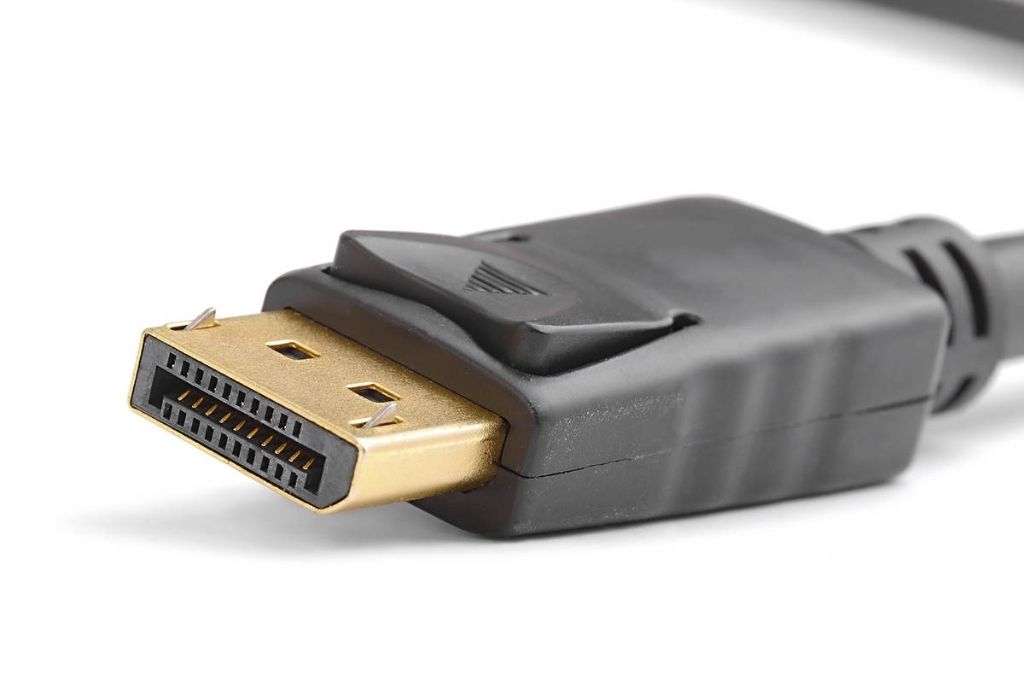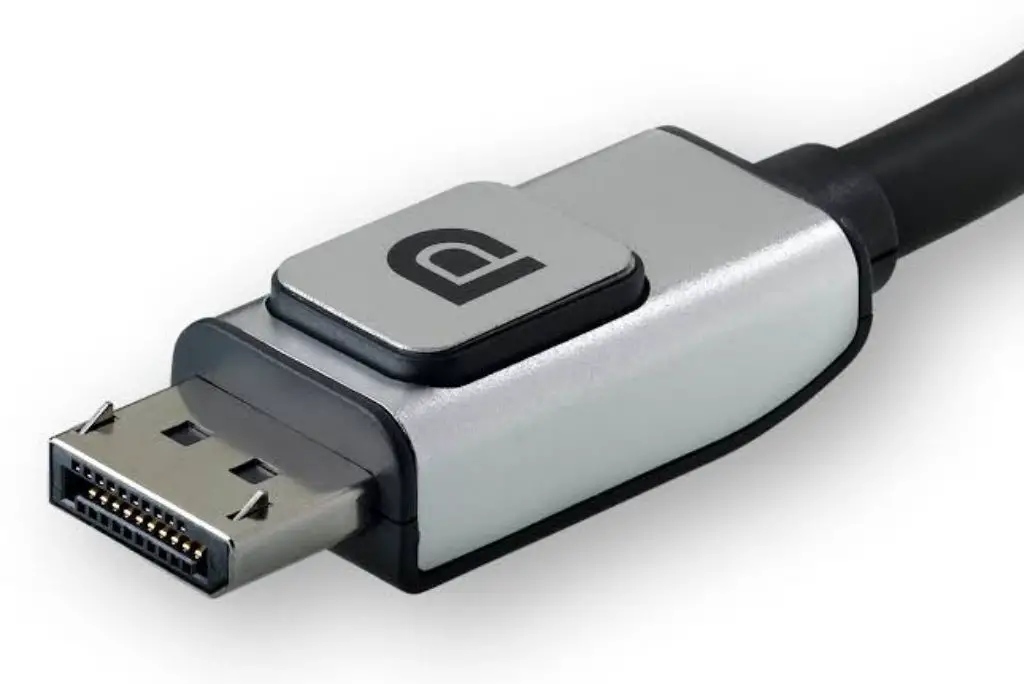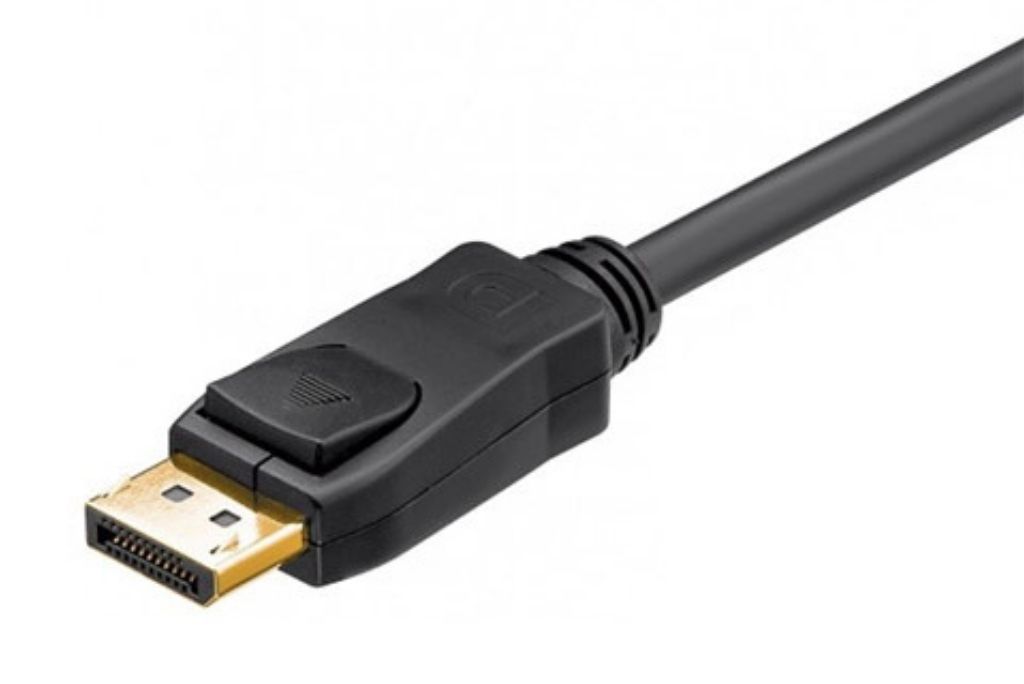You may already hear the name DisplayPort if you’re a high-end monitor user or a graphics card. It is a growing technology offering great features from other outdated interfaces.
Most people are familiar with the name HDMI as nowadays it is universal. Still, DisplayPort is specially made for Monitors, so it might not be that much popular, but it is competing hard with HDMI.
But that is not the only thing, there are a lot of things happening in this field, and here I’m going to discuss this technology and how it works in detail. So let’s start reading.
So, What Is DisplayPort?
In simple words, DisplayPort is a digital display interface that transfers the video signals from a video source or GPU to your Display device or Monitors much more efficiently than older interfaces like VGA and DVI. The older interfaces were not that efficient, and DisplayPort was made to replace those old interfaces.
I’ve used the word ‘more efficiently’ because DisplayPort provides much better resolution, refresh rate, and bandwidth than VGA and DVI. That means it is a much better option for you if you are a gamer or video lover.
It was first introduced in 2006 by VESA (Video Electronics Standards Association) as a video interface, but it currently carries Audio, USB, and other data.
Also, DisplayPort is not just a cable; it is a group of standards and has many devices.
How Does DisplayPort Works?
DisplayPort is a digital cable that transmits data in binary code of 1s – 0s; thus, it provides higher quality and speed. Older technologies like VGA and DVI use Analog signals for data transfer, which are slow and serve poor quality.
Like an Ethernet cable, it transmits packetized data and PCI-Express ports on a motherboard. This technology also supports micro packets data embedding a clock signal; therefore, we get an excellent resolution and refresh rate.
To use the DisplayPort facility, your motherboard and monitor should support DisplayPort functionality. You will connect your computer [GPU] to a monitor using a DisplayPort cable.
In simple words…
The DisplayPort works similarly to the cable that connects your audio and video to the computer. You must plug one end of the cable into your computer, laptop, or any external graphics card; and the other into the display.
The auto-detecting feature will read each other’s configuration, but you must manually select the resolution and refresh rate.
DisplayPort greatly benefits from technologies like DVI, VGA, and HDMI. The cables are durable and mostly have a metal coating. It is compatible enough for all users and generates the best quality display on your screen.
The cable is also ideal for various installations like the in-room and room-to-room home theatre. These days all the cables are coated with fiber optic starting from the length of 1meter to 15 meters.
The active DisplayPort converters are more extensive and costly as they have additional chips that produce the network signal. The adapters utilize the DP++ to generate the heavy lift from one or more physical interface converters.
The latest DisplayPort is set up to convert more than one monitor.
The Displayport cable is a next-generation interface technology for monitors and projectors. The cable has been replaced with DVI and VGA and is preferred in the market.
Starting with homes, offices, hospitals, and data centers, this cable is assured to deliver the best and highest performance that you would expect.
Note: DisplayPort is not just a cable, it is a video interface for better quality and performance. To use this technology you need to have DisplayPort supported motherboard, display and then the cable.
Different Versions of DisplayPorts
Till now, there are a couple of versions of DP standards; they are;
- DisplayPort 1.0 to 1.1 [2006]
- DisplayPort 1.2 [2010] [most used]
- DisplayPort 1.2a [2013]
- DisplayPort 1.3 [2014]
- DisplayPort 1.4 [2016] [second most used]
- DisplayPort 1.4a [2018]
- DisplayPort 2.0 [2019] [latest version & most advanced features]
Wow, there are seven versions from 2006 to till now. But, the first few versions were not that popular. DisplayPort 1.2 and 1.4 have been greatly adapted by people and are the most popular versions till now.
DP 2.0 is now on trend, and many advanced gamers and streamers are upgrading their equipment to use the advanced features of this version.
Features of DisplayPort | Why People are Shifting to DisplayPort
Consumer technology is the most common use of DisplayPort. It is mainly used for higher resolution and refreshes rate, so if you are a gamer, it’ll give you the utmost experience.
1. Auto-Device Detection & Configuration
The DisplayPort cable can detect one another and automatically starts configuring things. You will need to use a remote that will control your monitor, and you will need to select the DisplayPort input manually.
Sometimes we also have to select the resolution manually and refresh rates depending on the display device. Once you are done with the above specifications, your cable will work fine.
2. Technical Level
The DisplayPort cable works more efficiently at this level; it handles packet-size data and transmits it in the same manner as the Ethernet cables and PCI-Express ports in the motherboard.
The data can be transmitted as micro-packet data with a clock signal embedded within them.
Thus it is responsible for the cable to be more efficient in terms of streaming and playing high-quality games on the top resolution display. The refresh rate is also smooth and faster and will fully satisfy you.
3. Additional Features Of DisplayPort Cable
- After connecting the DisplayPort cable to the HDMI port, it produces up to 5K display at 30 Hz and 4K resolution at 60Hz.
- DisplayPort 1.4 can support 2x the refresh rate at a similar resolution displaying up to 8K quality resolution at 30Hz.
- The newly launched DisplayPort cable (DisplayPort 2.0) supports up to 16K resolution and up to 8K quality display at a higher refresh rate.
- The cable features optional latches that prevent the plug from any unintentional pulling by someone.
- It also has a greater integration with the latest ports like Thunderbolt.
- Better Daisy Chain is possible with DP cable only.
Pro Tip: If you are upgrading your gaming eqiupments to reach your gaming experience to next level, DisplayPort is the best current choice. Here you can read more about it.
Should You Use DisplayPort?
The answer to this question is pretty simple: If you use higher-end devices or systems, then DisplayPort can significantly maximize the resolution and refresh rate. It will give you the best display quality than others.
Currently, it is the best choice for gamers and streamers, and if someone upgrades their gaming setup, they may like to have new DisplayPort technology over HDMI, VGA, or DVI.
You must remember you’ll need your computer, display or monitor, and cables to support this technology.
If you don’t need high resolution and don’t use high-end devices like monitors or motherboards, then HDMI is OK.
If you also want to use multiple monitors or display with one single cable, then DisplayPort is a must for you.
As DisplayPort is really working great with Thunderbolt and USB technologies, the future of this standard is excellent. But, it will take some time to adapt to this technology.
Sources:
https://en.wikipedia.org/wiki/DisplayPort
https://www.cablematters.com/Blog/DisplayPort/what-is-displayport



